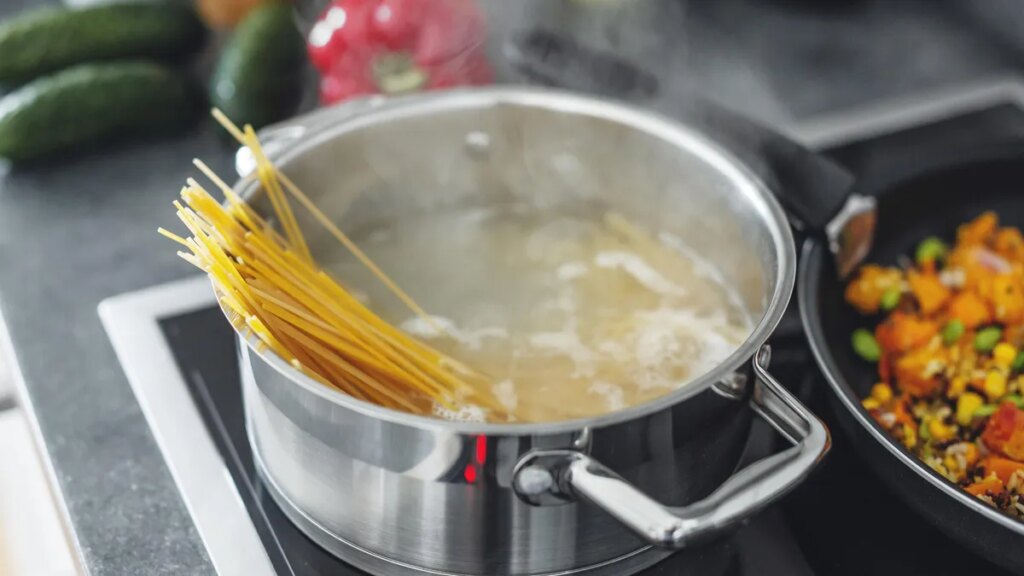Pasta has earned its status as a go-to weeknight dinner for good reason: It’s nearly impossible to screw up, takes minutes to prepare and delivers a hearty meal without emptying your wallet.
The pasta-making process appears straightforward — bring water to a boil, cook the noodles, drain and toss with sauce. Yet pasta’s widespread popularity has generated a flood of kitchen shortcuts and viral tricks across social media, all claiming to produce restaurant-quality dishes with less effort.
The truth? Culinary professionals say many of these popular techniques are either dubious or actively harmful to your final dish.
To cut through the noise, I spoke with Filippo de Marchi, chef de cuisine at De Majo Restaurant & Terrace in Venice. He identified the most frequent mistakes home cooks make with this Italian classic — and shared expert guidance on avoiding them for reliably delicious pasta every time.
1. Throwing pasta against a wall to see if it’s done
Cooked pasta will indeed stick to a wall but that doesn’t mean it’s a good way to determine whether it’s done.
“This isn’t the best way to check for doneness,” says de Marchi. “The texture of the pasta can change when it hits the wall and it doesn’t give an accurate indication of whether it’s properly cooked.” Plus, you’re likely to splatter your wall with starchy noodle juice or watch it slide down the wall and behind the stove.
Instead, scoop out a single strand and taste it. You’ll then be able to tell if it’s achieved that perfect al dente texture.
2. Adding olive oil to pasta water
Olive oil in your water isn’t the best fix for sticky pasta.
According to Marchi, one of the worst offenses is adding pricey olive oil to pasta water, thinking it will keep noodles from sticking. Olive oil is a necessary addition to most pasta dishes, but save it for the plate.
Some folks think it will help keep pasta from sticking when added to boiling pasta water, but “the oil just floats on top of the water and doesn’t coat the pasta effectively,” says de Marchi. The best way to prevent sticking is to use plenty of water, stir the pasta regularly during the first few minutes of cooking, and ensure you use a pot of the right size for the amount of pasta you’re cooking.
“This way, the pasta has enough space to move around and cook evenly,” he adds.
3. Leaving the pot covered while the pasta is cooking
Stopping your pot from boiling over can be as easy as putting a wooden spoon across the top.
“Leaving the lid off the pot while the pasta is cooking is the way to go,” advises de Marchi. “This prevents the water from boiling over and helps control the cooking process. Plus, it allows the steam to escape, which helps prevent the water from foaming up and making a starchy mess.”
As recommended, also select a pot that is appropriately sized to ensure your pasta cooks evenly.
4. Thinking salt will help water boil faster
Salt won’t get your pasta water boiling significantly faster.
Based on a recent Reddit discussion, many people are unsure whether adding salt to pasta water makes a significant difference. The truth is that salt plays a vital role in pasta water, but not when it comes to heat. (Impurities change the boiling point of water, but the amount of salt you add to pasta water doesn’t make a significant difference.) That said, adding salt is essential so the pasta can absorb its flavor.
“If you’re cooking without enough salt, the pasta can end up tasting a bit bland,” warns de Marchi, whose signature dish at NHC Murano Villa is spaghetti alle vongole. The seafood dish originates from the region of ocean-adjacent Venice and consists of vongole (typically clams), garlic, white wine, and chili flakes, accompanied by sea asparagus and lemon zest.
5. Draining pasta until it’s completely dry
Leaving a whisper of pasta water will help the sauce adhere.
There is a reason why salted pasta water is held in such high regard. Not only does it contain a delicious brine to enhance sauces, but it also helps the sauce adhere to the pasta itself.
“This creates a more cohesive and flavorful dish,” argues De Marchi. “A little moisture can go a long way in making your pasta dish extra tasty.”
6. Running cooked pasta under water before serving
Rinsing pasta after cooking may not be the special trick we all thought it was.
If you want to avoid a potential injury from a rolling pin or wooden spoon, as Nonna might use, run your cooked pasta under fresh water.
“This can remove the starchy coating that helps the sauce adhere to the pasta,” says de Marchi. “The residual heat from the pasta helps the sauce to marry with the pasta, creating a more flavorful and cohesive dish. Think of it like a beautiful marriage — you want the sauce and the pasta to come together and live happily ever after, not to undergo a cold shower right before serving.”
7. Precooking sheets of lasagna
Not all lasagna recipes require precooked noodles.
“Precooking lasagna sheets isn’t necessary, especially if you’re using a sauce with enough moisture,” he says. “In fact, many lasagna recipes call for using the sheets directly without precooking, allowing them to absorb liquid from the sauce and cook during the baking process.”
Set it, forget it and let the magic happen in the oven. Pasta is not something to overthink or stress over. Its simple preparation makes it all the more enjoyable.

